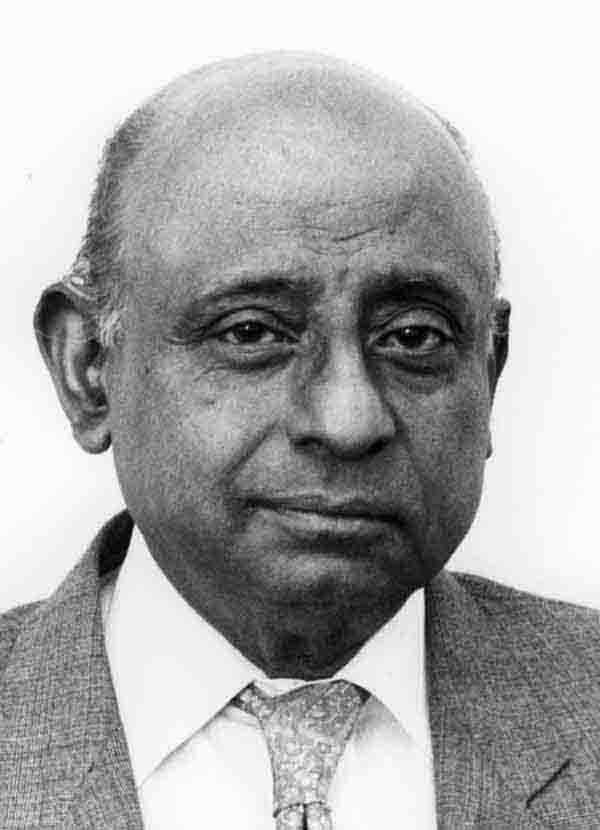“My military forces are now in the east and the north. There is a military rule in these two provinces, each with a military governor, yes, I say they are military governors. With my army I will see that there is no repeated attempt to set up a different administration in these provinces.”
You can be excused if you thought this is a very recent quote from one of the Rajapakses. But it is a quote of S.W.R.D. Bandaranaike from the Government Parliamentary Group meeting on June 3rd, 1958(1). And it was said after many Tamils were killed in riots.

Tarzie Vittachie
After I wrote the previous post , I came across the book Emergency ‘58: The story of the Ceylon Race Riots by Tarzie Vittachi. I have heard and read about the 1958 riots. And I have also read that the story of the Hindu priest being burned alive (explained in the book) is what motivated Pirapaharan to fight back. But I was actually taken back by the savagery of the ’58 riots detailed in that book. 1983 riots dominates the liberal Sinhala and Tamil narratives. And many tend to highlight ’83 riots as a one off aberration. But the details in the book show the ’58 riots were a play-by-play rehearsal for the ’83 riots in a larger scale. The planning, the players, the non existent state response during the riot, and scapegoating of the Tamils afterwards were all from the same play book. Replayed again in 1983.
While many individual heroics are always deservingly highlighted for saving Tamil lives, who will take the accountability for the collective failure to prevent the 1983 in the first place after witnessing 1958? And to have sat idle and watched 2009 unfold?
Are we embarrassed to admit why it was easy to confuse the above quote for something said in 2013? That we are no better than where we were in 1958? That no lesson was ever learned? And yet many among us seem to think that the pending Sept. election in the North is a gift from heaven.
Ever since the British, after much debate, transitioned our ancestors from a “representative government” to a “responsible government”, there has been one constant. That is the increasing scale of violence that the state was willing to dispense collectively against the Tamils as culminated in Mullivaikal in May 2009. Or redirect it at anyone unable to defend for that matter (3).
Clergy men’s hate speeches are captured on mobile phones now and they go viral. Monk’s gone wild. Had we had social media in 1958, we could have clearly seen that the role of the monk’s then was no different than than the JHU and the BBS variety of today. Instigators of Intimidation.
If the constitution says the state has to protect Sinhala buddhism, isn’t the police doing exactly that by protecting the monks against ill treatment (2)? Operating dutifully within a constitutional mandate. I know that is a stretch but the unabashed state patronage (2) to this hooliganism only highlights the sense of impunity the monks, the military, the police, the politician, and even judiciary officials feel in Sri Lanka.
Few posts ago, I mentioned the violent nature of the Sri Lankan state and the seeming tolerance of it by the citizens. This diagnosis seems to be missing within the Sinhala Buddhist discourse. As evident by the logic-defying, popular, narrative in the south of Sri Lanka that no large atrocity ever happened in 2009. A Tamil press can be burned down. Muslims can be intimidated.
Politicians see the silence of the electorate. Sure saying to themselves Reprezent! Gangsta style!
Few who want to be seen as fashionably liberal, limit themselves to the easiest of the causes. The ones Sivaram called the “Che Guevara t-shirt” variety. They never challenge the system. They don’t want to. The Dayan Jeyatileka kind only want to change the playbook but still keep the game(5).
Vittachi concludes the book with a question. “Have the Sinhalese and the Tamils reached the parting of the ways?” The question was asked in 1958. It was definitively answered, 25 years later, in 1983. Another 26 years later, in 2009, we were reminded of the answer.
55 years after Vittachi first asked the question, who in the Sinhala community is willing to openly ask the question,
Do we ever, in good consciousness, entrust the safety and security of the Tamils to a violent state that thinks it is only accountable to Sinhala Buddhists?
P.S. Once you do, send me a link so I can point you to some good Che Guevara T-shirts.
(1) Emergency ‘58. The story of the Ceylon Race Riots by Tarzie Vittachi ( page 85).
(2) http://colombogazette.com/2013/04/12/police-bbs-block-peaceful-vigil/
(3) http://gulfnews.com/opinions/columnists/tears-of-muslims-in-divided-sri-lanka-1.1169972
4) http://za.news.yahoo.com/gunmen-attack-tamil-newspaper-northern-sri-lanka-070652205.html
5) <http://www.dailymirror.lk/opinion/172-opinion/27324-sri-lankas-foreign-policy-lacks-architecture-dayan.html>